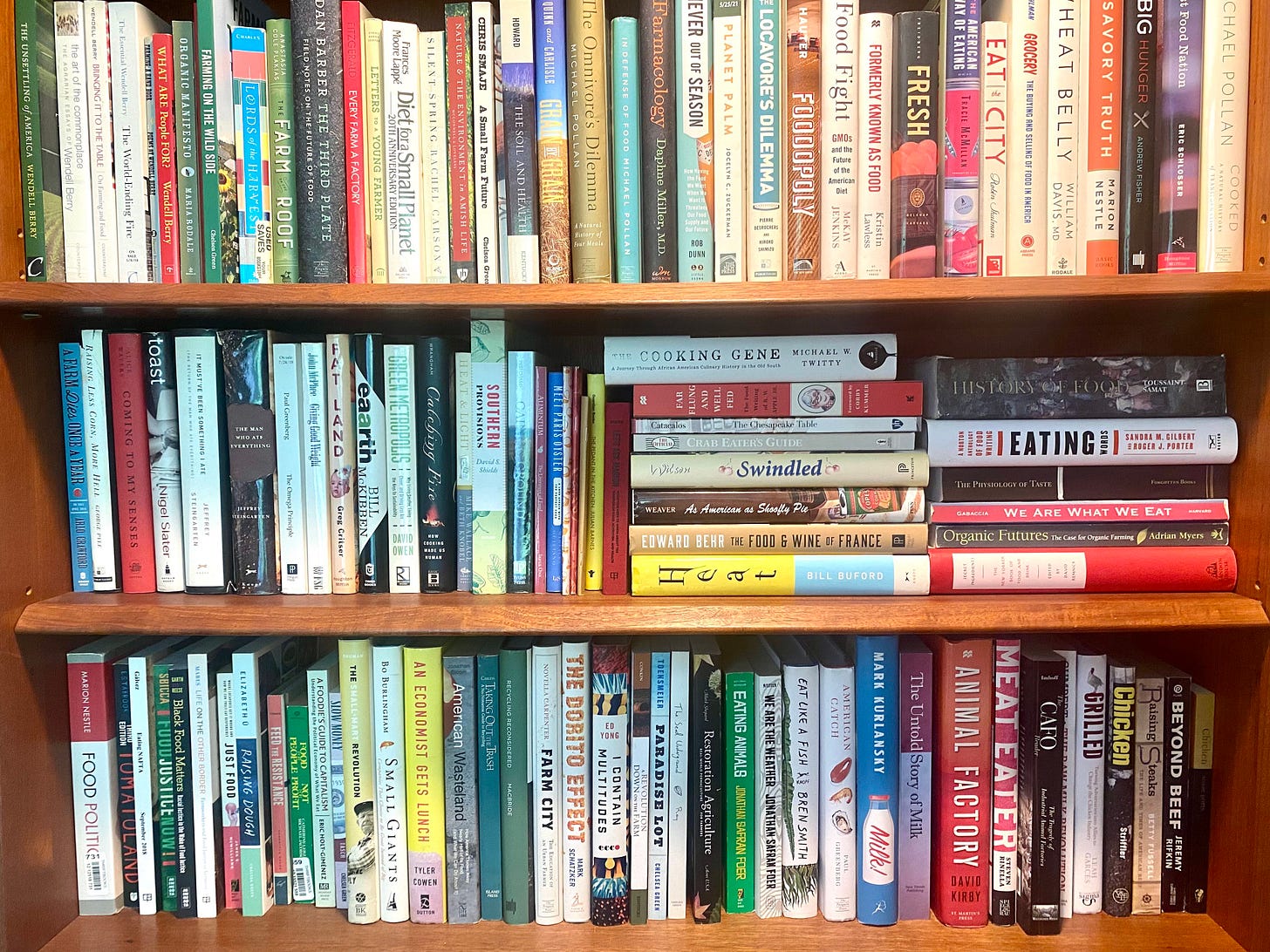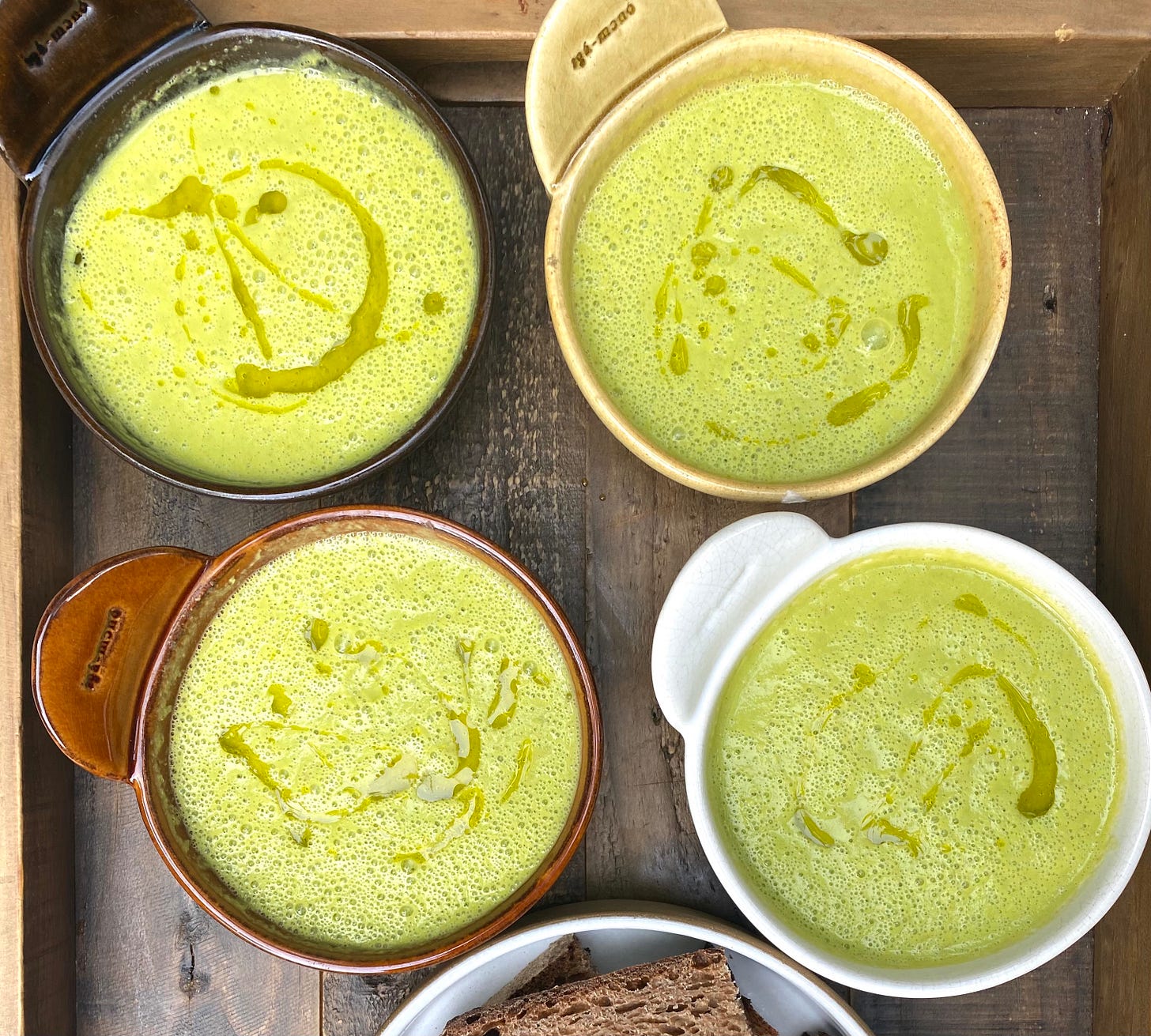I’ve got reading on my mind this week (even more than usual…which is a lot), because I’m getting ready to start a two-week fellowship at Vermont Law School, through the Center for Agriculture and Food Systems. The idea is that by taking the class — which is on the federal Farm Bill — I’ll gain knowledge that will help me better report on the law and its effects.
In addition to the reading I’ll have to do for class, I’m deciding which books to pack for my downtime. I recently started chef Peter Hoffman’s memoir, What’s Good? and I’ve got a pile of others on my desk I keep meaning to get to: The Living Soil Handbook, True Cost Accounting for Food, and the new edition of Defending Beef, among them.
Since summer is a time when, theoretically, you might have time to get into a good book, I thought it would make sense to share some of my favorite reads on food, agriculture, and the environment. From foundational texts to narrative non-fiction picks to memoirs, these books have expanded my understanding of food in profound ways. I hope they’ll do the same for you.
(Note: I’m not including Amazon links because I just can’t get behind helping to line the pockets of suddenly-cowboy-hat-wearing billionaires who say they’re flying to space to save humanity while their workers back on earth break their backs for $15 an hour. This isn’t a judgement of anyone using Amazon in an Amazon-world; we all know it’s nearly impossible to avoid these days. In many cases I included links to further coverage of the books or the publisher’s site. If you have a local bookstore and are able to support it, do it.)
New and noteworthy
These are a few books I read in the past year that I think are worth picking up.
*Perilous Bounty: Tom Philpott is a leading agriculture and environment reporter, and his book reports on two major challenges around how we produce food today: a water crisis in California’s Central Valley and soil loss in the Midwest.
*We Are Each Other’s Harvest: An anthology of essays, poems, and historical accounts from Black food and farming leaders. I read Tim Seibles’ poem, “Fearless,” at least five times.
*Salmon: Mark Kurlansky’s latest book traces the ways economic development threatens wild salmon—and what that pattern means for humanity’s survival. (I was completely riveted by the lives of these fish. I mean, some navigate hundreds of miles back to their exact birthplace, leaping up waterfalls along the way.)
Mainstays
These are the books that get at fundamental truths and lead to lasting perspective shifts. I come back to them over and over.
*Silent Spring: The book that launched the environmental movement. Nearly 60 years later, it’s more relevant than ever.
*Diet for a Small Planet: Similarly, the book that first sounded an alarm about food and environmental impact, 50 years ago.


*Food Politics: NYU professor Marion Nestle is a legend, known for her attention to how big food companies influence nutrition science and policy. This is the book that started it all, although it’s an academic read that can be tough to get through on, say, a beach day. Her more recent book, Unsavory Truth, hits on similar themes and is less dense.
*A Foodie’s Guide to Capitalism: It’s impossible to understand the American food system without understanding the economic forces that drive it. Voila!
*Big Hunger: I love this book, and given the constant attention to and political will around reducing food insecurity in the US—especially since COVID-19 exacerbated hunger—I don’t think it gets nearly enough attention.
*Bringing it to the Table: Some will roll their eyes at how often farmer-poet Wendell Berry’s name is mentioned among food system reformers, but the depth of his thoughtfulness about how food is a construction of relationships between nature, animals, and people is unparalleled. It’s possible to draw inspiration from his stories without demanding a return to horse-drawn plows, I promise.
Further reading
These are just as important but are not quite as dense and include way more narrative. In other words, better to throw in a tote for subway or park bench reading.
*Tomatoland: Barry Estabrook’s riveting account of tomato production from seed to supermarket, including game-changing reporting on immigrant farmworkers in Florida’s tomato fields.
*Eating Animals and We Are the Weather: Two for one! Jonathan Safran Foer is a novelist first, so his books on meat eating include masterful storytelling that draws you in.
*The Cooking Gene: Speaking of great writing, Michael Twitty’s book on Southern food and the African-American experience is filled with it. It’s also packed with critical history and vivid food memories that illustrate the connectivity between food and race. Here’s something he said to me when the book came out:
“I’m going to put it to you like this: food security, culinary justice, food justice, food sovereignty—these are the basis of health, the environment, education. It is for me the greatest civil rights issue we have today, and it all goes back to what we put in our mouths, how it gets in our mouths, and how the people who labor put it into our mouths.”
*Toast: This book is not about social issues, food politics, or agriculture. It’s a British food columnist’s memoir in which he essentially tells the story of his childhood through food—and it’s brilliant. It reminds me of how one person’s story occasionally has the power to illuminate lived experience in a way that almost anyone can relate to. I think that’s probably good for humanity, right?
Still hungry?
Kelp at a crossroads. For Civil Eats, I reported a story on how as interest in seaweed as a climate-friendly food and fuel source increases, major players are investing in North American seaweed farms. Meanwhile, some Indigenous communities, small-scale farmers, and harvesters are concerned about fast, unregulated growth. A teaser quote from the piece: “So much of this is: Who is saving the world harder and faster with sexier videos?”
A side of policy
The hands that feed us. On Wednesday, the Senate Judiciary Committee held a hearing titled “Immigrant Farmworkers are Essential to Feeding America,” at which Secretary of Agriculture Tom Vilsack testified. It was a surprising move, given no other ag secretary has ever testified before the Committee, and Vilsack made some strong statements about the important role immigrant farmworkers play in our food system and overall economy. His appearance was meant to push for the passage of legislation that would give some undocumented farmworkers a path to citizenship. A quote from his comments:
“An individual who’s worked in this country for 20 years; I asked him what his hope or dream or aspiration five to 10 years from now? He said very simply, ‘I would like to see my family.’ I said, ‘What do you mean?’ He said, ‘I haven’t seen my family for 20 years. I’m concerned that if I leave the country, I won’t be able to get back.’ So when we talk about family values, I think these farmworkers are folks who understand and appreciate the essential nature of family values.”
Maine event. Maine’s legislature approved a ballot initiative that will make the state’s residents the first in the country to vote on whether to embed a “right to food” into the state constitution. While many countries around the world recognize the right to food, the US is not one of them, and other states are considering following suit.
Currently devouring
Maíz matters. The Counter published an in-depth story that gets into many of the potential impacts of Mexico’s historic declaration that it would phase out the use of glyphosate—the most widely used herbicide in the world—and genetically-engineered corn seeds. Mexico’s government is intent on reclaiming the country’s food sovereignty and safeguarding the incredible genetic diversity of the country’s native corn varieties; multinational agribusiness companies are aggressively fighting the move.
Actually eating
Cool summer soup!
Spike made this gazpacho in a blender in just a few minutes and it turned out green because of abundant cucumbers and the use of yellow heirloom tomatoes. There are gazpacho recipes all over the internet that you can get creative with this time of year when tomatoes and cucumbers are at their best.
Let’s be friends
Keep up with me, please, on Twitter and Instagram. See you in a few weeks!





